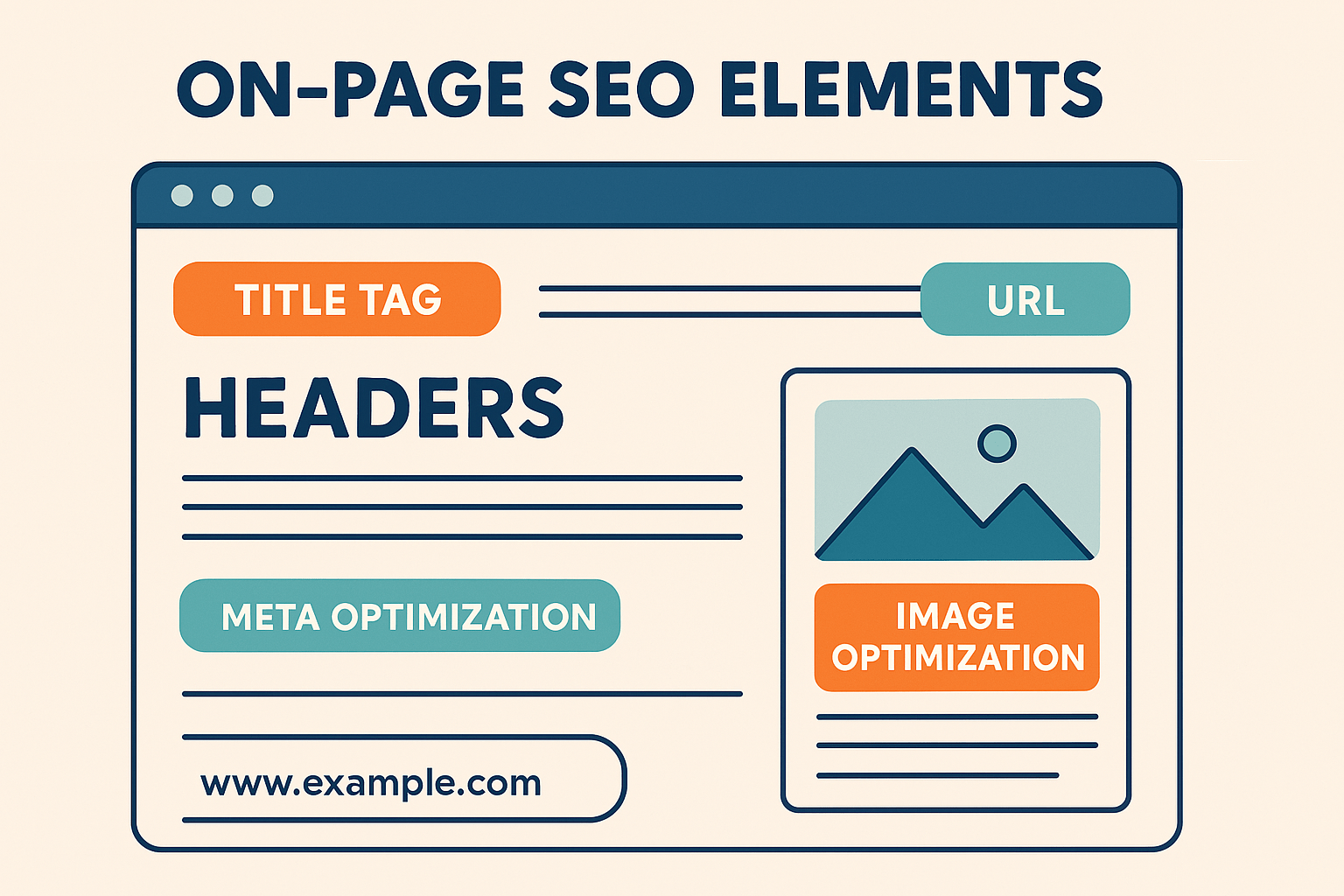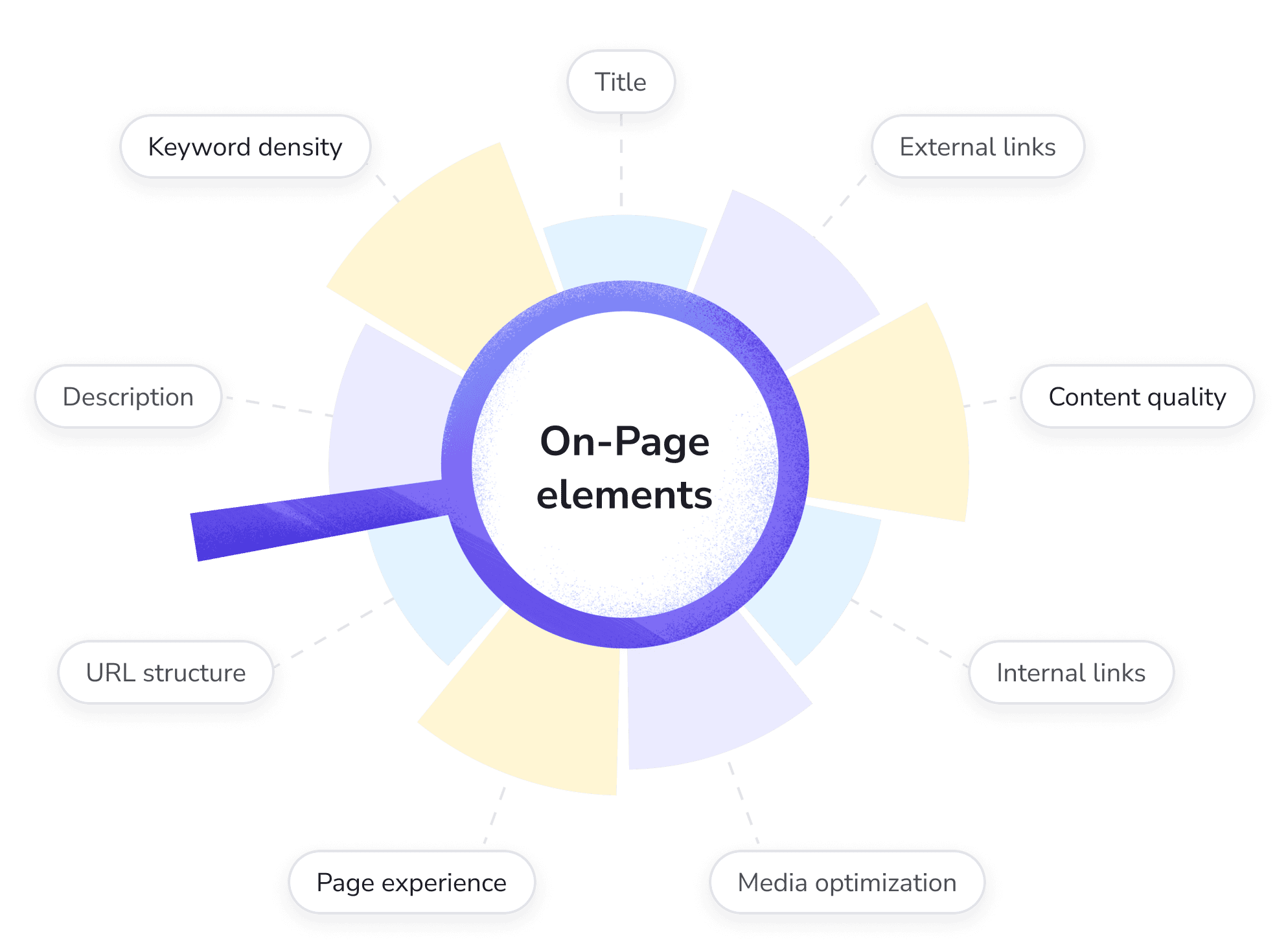On-page SEO is the part you control directly. From your titles to your images to your internal links, on-page SEO helps Google understand your content—and rank it higher.

What is On-Page SEO?
On-page SEO is everything you do inside your website to help search engines rank your content. It includes your keyword usage, content structure, HTML tags, and internal linking strategy.
- Keywords in the right places
- Optimized meta tags and headers
- Alt tags for images
- Clean, short URLs
- Logical internal linking
← Missed Chapter 3? Start with keyword research first
Step 1: Optimize Your Title & Meta Description
Google uses your title tag and meta description to decide what your page is about—and whether to show it in results.
- Use your focus keyword near the start of the title
- Keep titles under 60 characters
- Write compelling meta descriptions (under 150 words)
Tool: Try SEO Mofo Snippet Optimizer to preview your search snippet.
Step 2: Structure Your Headings
Use heading tags (H1, H2, H3) to organize your content. Search engines use them to understand topic flow.
- Use one H1 per page (usually the title)
- Use H2s for major sections, H3s for subpoints
- Include keywords naturally in headings
Step 3: Use Keywords Properly
Keyword stuffing is dead. Today’s on-page SEO focuses on natural usage and semantic relevance.
- Include focus keyword in the first 100 words
- Use variations and synonyms (LSI keywords)
- Keep keyword density around 1.5–2%

Step 4: Internal Linking & URL Structure
Internal links help users (and Google) navigate your site better. Keep your URLs short, readable, and keyword-rich.
- Link related articles together
- Use descriptive anchor text (not “click here”)
- Use clean slugs like /on-page-seo-guide/
Freebie: Download the On-Page SEO Checklist (PDF)
Conclusion: Control What You Can
On-page SEO is your first layer of optimization—and the easiest to implement. Start here before you chase backlinks or technical fixes. It’s the foundation of your content’s success.
Next Read : Technical SEO →
Previous : Keyword Research for SEO →